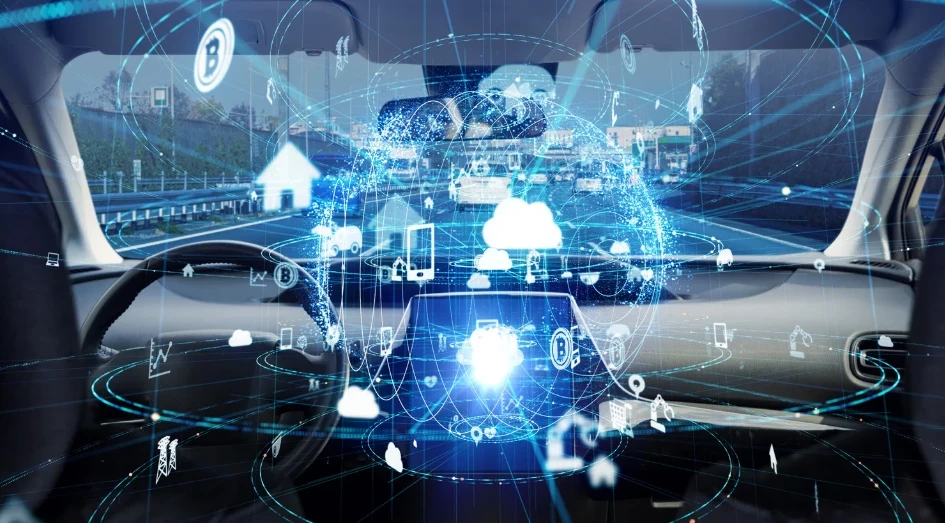Training on model-based systems reaches a critical point
Add bookmarkOngoing education is a necessity for commercial and industrial engineering careers. Few people in engineering remain productive without learning about the latest changes and upgrades in their fields. Much of this learning is formal education presented off-site and certified by engineering boards of varied capacities.
When online learning became popular in the last two decades, remote technical education became possible. Even the most complex course work in STEM subjects grew, just as the first CAD/CAM numerical programs morphed into complex, visual 3D-representative displays. This visual explosion became available to individual engineering students through the exponential growth of computing power in a single machine, and revolutionized training in design and manufacturing.
Electronic systems engineering is one piece of the modeling puzzle that is experiencing growing pains in producing consistent growth and standardization. In the automotive realm, we know that electronic systems, and systems in system, have become the leading innovative product in cars and trucks. GPS tracking is ubiquitous, and camera/sensor systems led to sensing everything inside the vehicle; and now, everything in the outside environment too.
Education and electronics go together
One of the breakthrough achievements of HTML development is its extensibility – the ability to allow expansion of simple coded websites into complex active sites with multiple sections and link them together automatically. Model-based systems engineering (MBSE) seeks to move from linear documentation of systems analysis to three-dimensional documentation showing a complete system in concept, operation and failure. As an example, these are the kind of system representations necessary for autonomous vehicles, in which the system must be prepared for all outside accidents or inside failures.
Extensibility is the key not only to engineering modeling but to learning and sharing as well. For example, the Internet of Things (IoT) arose from advanced wireless networks. We will look at the availability and consistency of MBSE training and discuss the evolution from mechanical modeling to advanced electronic system-in-system modeling.
How dated is the engineering curriculum in major universities? Are facility requirements being met? Can companies use the standard in-house seminar and classroom format in an electronics environment that seems to accelerate every few months? We will look for answers about public and private MBSE education.
Is training falling behind?
A report (1) on the growth of MBSE briefly states the problem: As automobiles require more sophisticated electronic systems which must be secured, complex modeling becomes a necessity. However, training programs and trained personnel have not kept up with demand:
“MBSE is still being applied in pockets within organizations and unevenly across industry sectors. Similar to the evolution of model-based approaches in other disciplines such as mechanical and electrical engineering, the transition occurs incrementally as the methods and tools mature. The adoption of MBSE requires a workforce that is skilled in the application of MBSE. This requires organizations to provide an infrastructure that includes MBSE methods, tools, and training, and a commitment to deploy this capability to their programs. As with any organizational change, this must be approached strategically to grow this capability and learn from their experiences,” the report said.
The popularity of online learning, and availability of electronic education on CD, etc., provide the most convenient platform for education to the general population ever created. By their nature, engineering groups have the computer power to present these materials. This report states that the development of educational opportunity runs parallel to the need for “advancing the practice requires improvements in the modeling languages, methods, and tools. The modeling languages must continue to improve in terms of their expressiveness, precision, and usability.”
So, the problem is not one of capacity but development, both in the MBSE structure and the learning environment. This parallel development has several critical factors that must be increased:
- Personnel availability
- Allotted time and place
- Wage compensation and promotion
- Developers who can create and verify methods and tools
- Educators
Teaching – and learning --this broad a subject is a complex venture. Let’s look at one aspect of MBSE: SysML, the language that is its backbone. In a report (2) detailing the language and its parameters, the authors lay out a preferred method of learning. Like most complicated engineering topics, learning requires a good deal of prior knowledge and delving into this language enables the student to learn one piece at a time. SysML is a subset of UML and is learned based on the student’s knowledge of UML.
Another report (3) about learning notes that the school involved – the Massachusetts Institute of Technology – asked a list of companies for their input about the most critical needs for teaching MBSE. This method of inquiring of the end users of training programs is common. The speed of electronic development usually demands input from the manufacturer/creator about their new product plans. The employer in turn asks for a specific set of skills to be taught, in order of need.
In this case, most companies agreed that introduction or basic courses in modeling languages were not a priority. They wanted a higher level of course to be developed. So, the school developed a set of courses in which students become involved in ways to tie known models together, thereby creating a broader model for use in the future. Extensibility is a priority in this kind of exercise since all systems must fit in to a broader system including development, use, safety/security and troubleshooting. “One approach to model-based engineering is the use of one big model as the single source of truth … As an example, he said an automaker may have separate models of suspension performance and of overall vehicle stiffness and try to tie those two models together,” the report said.
Another example – electronics in aircraft – was presented as having one of the most rapidly advancing systems integration needs in all of manufacturing. Along with automobiles, planes use increasingly complex autonomous electronic systems. “One aircraft manufacturer … determined that with the rate at which new features are added to aircraft and the demands of electronic buses in aircraft, a model-based engineering approach was mandatory.”
Private, public and combined education
The report above from a private university brings out the point that learning complex engineering systems is often best achieved by combining public and private resources. This has been the practice in medicine for decades; companies join governmental entities like health bureaus to attack a dangerous health problem.
Since learning and implementing MBSE is an expensive proposition, companies sometimes choose not to adopt it. Experts say that this is simply postponing the inevitable move to model-based systems. Unless a company’s master plan is to be a tiered supplier receiving all design matters from a client, this company will have to move to a broad-based model system in time.
There are several ways to incorporate public and private education into an MBSE training scheme, especially when the development includes matters of national security and safety. Autonomous vehicle travel obviously falls into this category (as do aircraft, electric infrastructure and many other industries) and can readily be funded by public finance. This allows governmental facilities to be used for training and research. Public universities now perform a vast amount of training and research, intending to send graduates into private firms and government agencies.
Schools and teachers
Since MBSE stands as the “next generation” of methods to handle engineering complexity in nearly every industry, formal education remains the first choice for students intending to become electronics engineers. As the MIT report noted, models are far larger and more complex than ever before. Graduated engineers will continue education both in and out of their companies, with certification in MBSE set as one goal.
The American Society for Engineering Education (ASEE) published a report (4) that uses a specific course set to show the history of MBSE training, particularly SysML, and the current result of that evolution. The setting is the engineering department at the University of Detroit Mercy, Michigan. At first, students entering the masters course in model development still compartmentalized engineering tasks, the report said. They tended to leave known quantities implicit in their studies, whereas “MBSE has a focus on making the implicit explicit … the written content in the courses is intended to trigger reflection in the students and force them to become self-aware about their systems approach.”
The engineering department used its history of model-based training with the purpose of distilling the most complex parts of systems engineering into more basic, usable parts. These could become the basis for allowing more in-house training at companies, taking less time and letting students concentrate on the most important pieces. For example, one text about SysML was not used until a later course in the curriculum. Now, the department is using it from the beginning because students with the prerequisites benefit from the book on the first day, the report said.
Every type of technical industry is getting more complex: healthcare/pharma, transportation, communications and energy are all experiencing rapid technical changes that challenge engineers to adopt macro-based views of problems and solve them with extensible results. The solutions to those problems lies in MBSE extensibility and providing the necessary training.
Sources
- http://sebokwiki.org/wiki/Transitioning_Systems_Engineering_to_a_Model-based_Discipline
- http://sysmlforum.com/sysml-faq/what-is-best-way-to-learn-sysml.html
- https://www.evaluationengineering.com/learning-adopt-model-based-systems-engineering
- https://www.asee.org/public/conferences/78/papers/19344/view





















